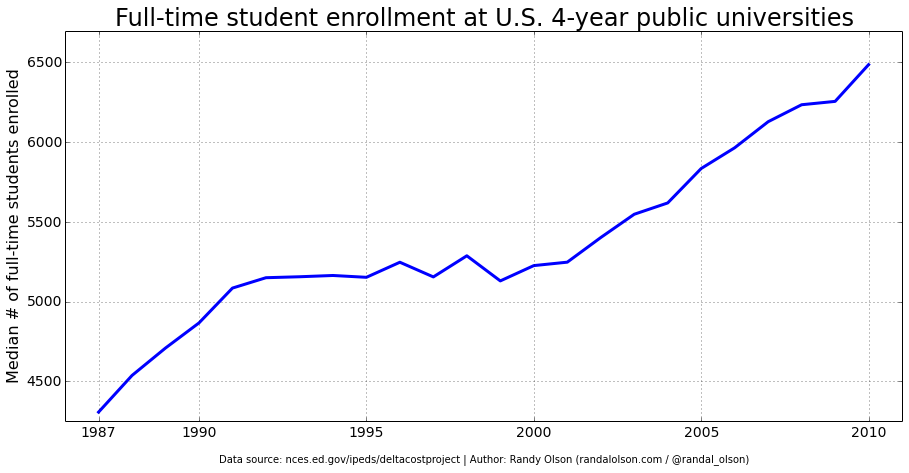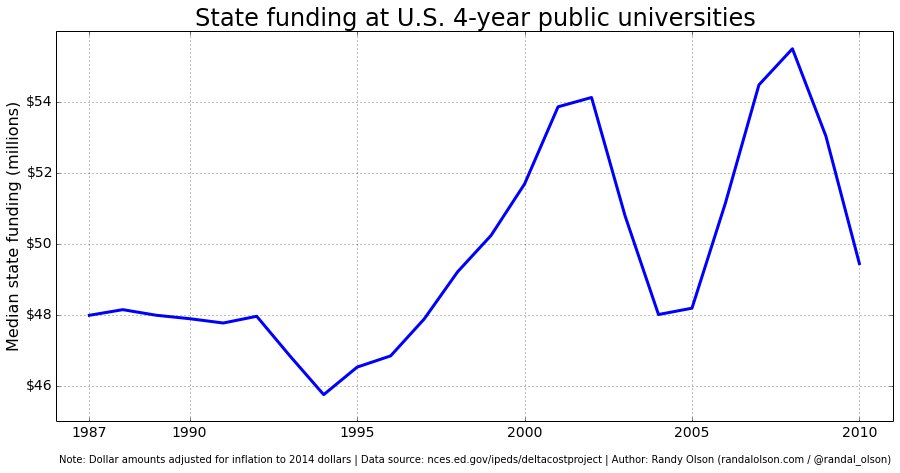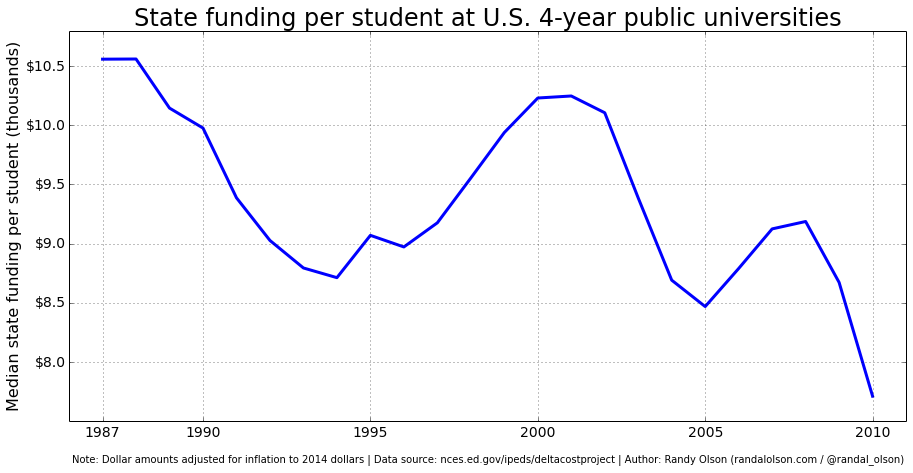Skyrocketing student enrollment is partly to blame for rising college costs
Earlier this month, The Chronicle of Higher Education released an article claiming that student enrollment is partly to blame for rising college costs. I was a little skeptical at first, largely because I'd seen some damning evidence showing that recent state funding cuts were the real culprit. I figured since I have the IPEDS Delta Cost Project Database on hand, I might as well take a look for myself and see what the numbers say. The results were pretty eye-opening.
As many of us know, student enrollment has been steadily rising at universities across the U.S. If you take a look at the graph below, the average 4-year public university has seen a ~25% increase in full-time student enrollment between 2000 and 2010. My alma mater, the University of Central Florida, saw its undergraduate student enrollment spike from 19,781 to 37,609 students in that time period -- a 90% increase in only 10 years!

Full-time student enrollment in U.S. 4-year public universities
What news outlets typically claim lately is that state funding to these public universities has been steadily declining in the past decade, and that these cuts have been the reason we've seen tuition costs rising so rapidly. Their argument isn't entirely incorrect: The average 4-year public university has had its state funding cut significantly in the past decade, especially since the recession in 2008. Michigan State University saw its state budget cut from about $520 million in 2000 to about $380 million in 2010 -- a tremendous cut by anyone's standards. (Note: dollar amounts were adjusted for inflation to 2014 dollars.)
But if you'll notice in the chart below, the average 4-year public university is still receiving more state funding in 2010 than it did in the 1990's when adjusted for inflation. So why can't these universities get by if they're actually receiving more state funding than 20 years ago?

State funding for U.S. 4-year public universities
The answer, of course, is where we started: Student enrollment. If we divide the average 4-year public university's state funding by its enrollment, we get the chart below. Skyrocketing student enrollment has made it so universities have to teach an ever-increasing number of students with an ever-shrinking budget. What's worse is that we're currently at a stage where public universities are receiving the least amount of state funding per student in the past 2+ decades. Faced with the decision to cut spending and deliver lower quality education to more students, or increase tuition and maintain the quality of higher education, it's no wonder that university administrators chose the latter.

State funding per student in U.S. 4-year public universities
Now, I'd like to reiterate one of my points from my previous posts: College isn't for everyone.
We've been selling too many high school students on this New American Dream: If you work long and hard enough, and if you sacrifice enough, you will eventually graduate college without debt and land your dream job. Instead, students are graduating with an ever-increasing amount of debt and finding it hard to find a job related to their degree. Even worse, by encouraging more and more students to go to college, we're exacerbating the college debt crisis and making college more expensive for everyone.
Let's face the facts: You don't need a college degree to have a successful career nowadays. There are plenty of lucrative careers that don't even require a Bachelors degree. We need to stop lying to the Millenials by telling them that they need a college degree to get ahead.
Tags

Dr. Randal S. Olson
AI Researcher & Builder · Co-Founder & CTO at Goodeye Labs
I turn ambitious AI ideas into business wins, bridging the gap between technical promise and real-world impact.